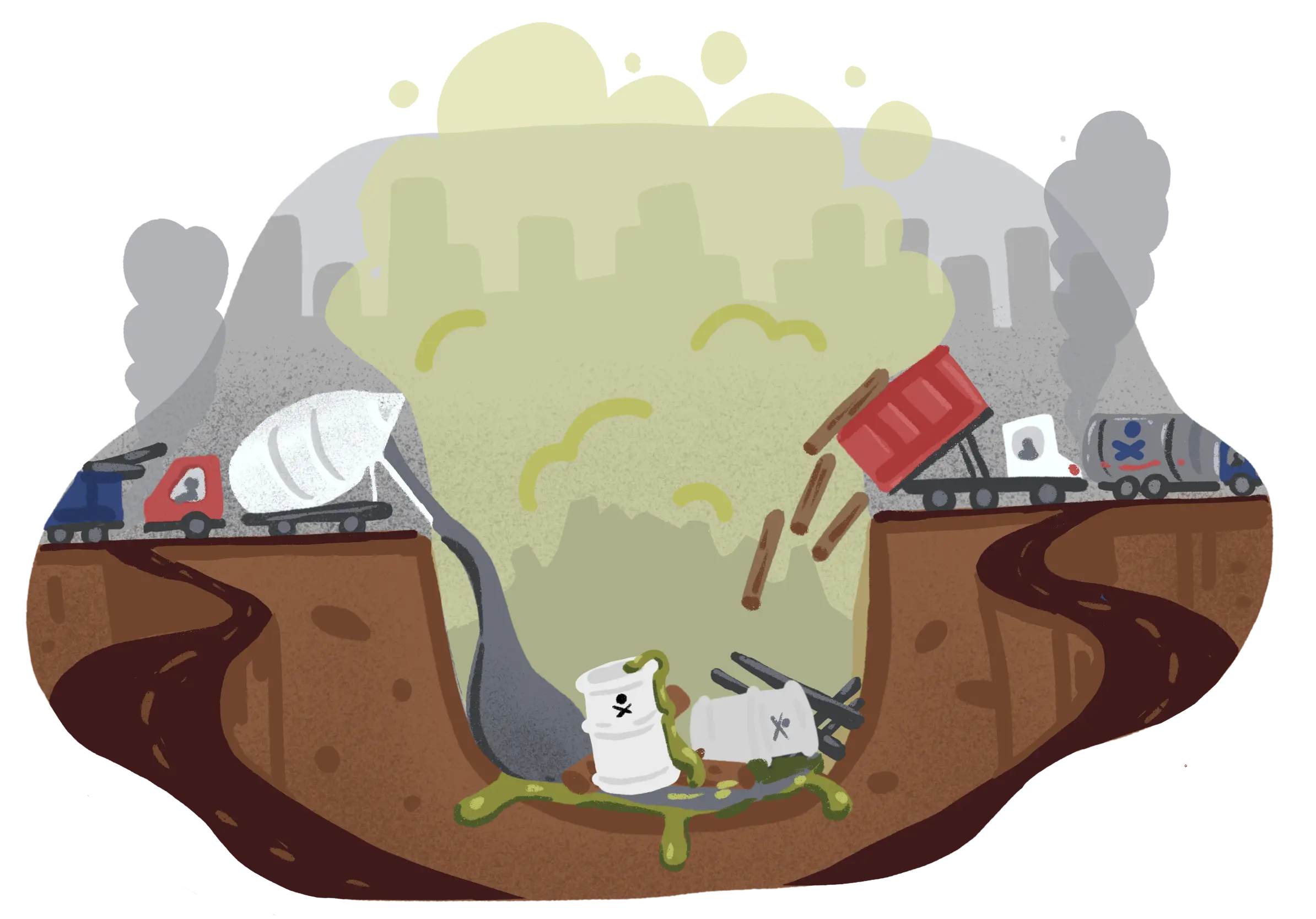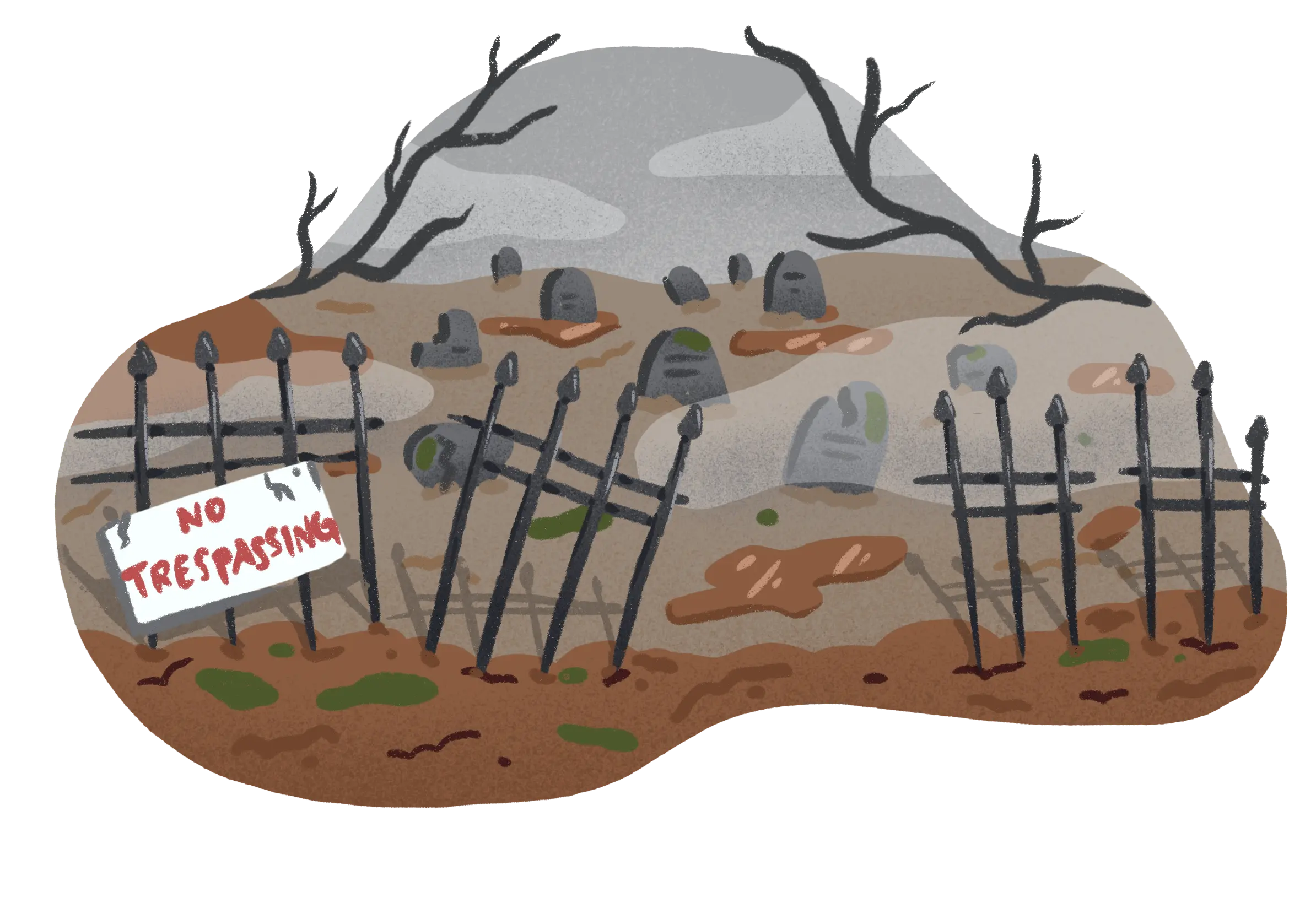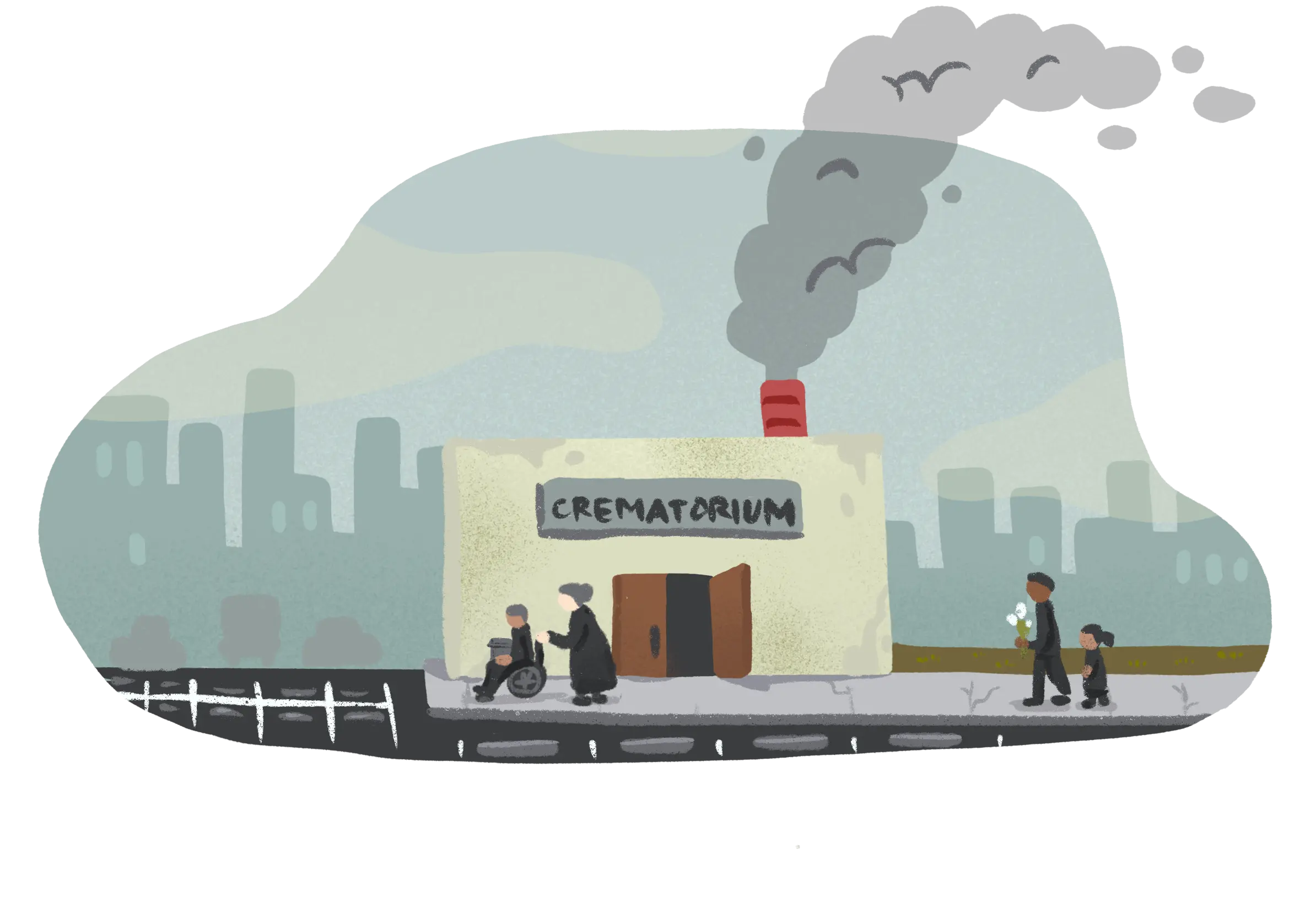
What is happening underground in a traditional cemetery?
In the United States alone, traditional cemetery practices consume over 1,100 acres annually, bury approximately 20 million feet of hardwood boards, 64.5 thousand tons of steel, 17 thousand tons of copper, 1.6 million tons of concrete, 4.3 million gallons embalming fluid, and emit 25,000 metric tons of carbon along the way. For scale, that is enough materials to construct 4,180 homes, and enough formaldehyde to fill a 8 olympic-sized swimming pools - every year.
Traditional cemeteries are low in environmental services value. Lawn cemeteries provide minimal air quality improvement, stormwater retention, and habitat support. Furthermore, their maintenance demands are not environmentally friendly. They require near-constant mowing, irrigation, fertilizer, and weed and pest chemicals to keep the monoculture turf healthy. The compacted soil from heavy machinery use is not conducive to healthy plants or stormwater absorption. The tombstones and monuments require regular bleaching to keep mold, algae, and lichens off. Heavy equipment is needed regularly to replace fallen headstones, crumbing mausoleums, and decaying monuments as the ground inevitably and continuously shifts over time.


Glad you asked! Traditional cremation accounts for the emission of roughly 360,000 metric tons of CO2 annually. For scale, that is the equivalent of burning 30 gallons of gasoline per cremation! Cremation also releases other dangerous pollutants into the air like mercury. During the early days of the COVID-19 pandemic, air quality in some cities became so poor that they had to stop cremations.
The planet and people demand a more affordable and sustainable solution for end-of-life practices that are in line with today’s religious and cultural values.
Talk to Us!
+Benefactors
+|
Cookies Policy